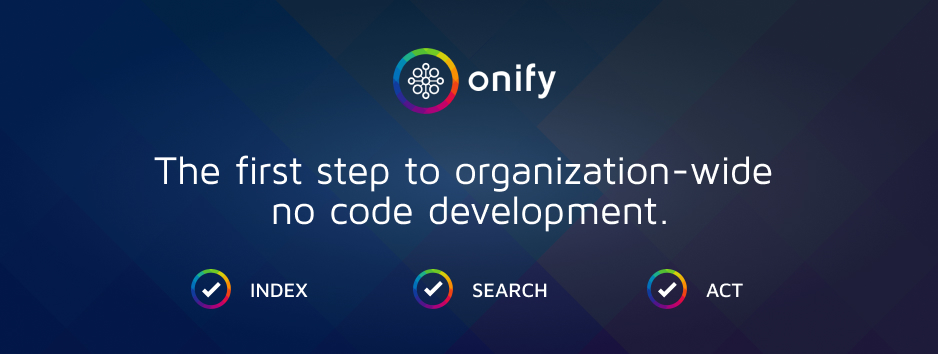In my conversations with technology and sales leaders at no code development software companies, I’ve found that many agree on access to data and understanding where data lives to be one of the biggest hurdles for no code developers to overcome.
You can find many different approaches to this problem. For example, AppSheet has a wizard at the start of building an application that asks the no code developer to identify the types of data that will be required by the application. Using simple drop-downs and some other internal smarts developed by AppSheet, this process makes some assumptions and puts in placeholders and/or data types where needed to create a template from which the business can customize the application.
Another example in BettyBlocks and Bubble.io, is more UI driven. The no code developer can focus on building the UI and piping in the data later.
In the case of many low code development platforms, the no code developer can learn a fraction of what a full code developer would need to know about data types and structures and can use a series of data mappings that tie whatever data definition an application needs to the real data source connected via web service.
All of these approaches are driven by the assumption that an organization has access to all of the data that it needs to build better business processes and applications to automate those processes. In a recent conversation with Onify founder Robert Lundsten, I found some of the danger in that assumption.
Some of the most useful automated process in a business have to do with people, physical assets, and other non-digital objects that live inside siloed software solutions. Large enterprises have commonly made decisions to standardize on certain ERP stacks to make managing these objects easier, but many small to medium sized businesses are not ready to make an ERP-level investment from both a price tag and manpower required point of view.
Leading no code vendors are taking steps to glue existing SaaS solutions together by acquiring or building web service level capabilities to get the data flowing. The Cloudpipes acquisition by Quick Base is a good example of this. However, the no code developer in these circumstances are limited by the connectors available to bring these objects together. This issue is a common criticism of services like Zapier and IFTTT – despite their increasing progress.
Onify is taking a different approach to this problem that will likely be a boon to the no code development industry as a whole.
- Index – Onify helps you index all of the objects in your organization to establish a single source of truth. If the object exists in the business, its definition is in Onify.
- Search – Using Onify, end users can search for any object. Does the IT team need to take action on an employees laptop? Search for it in Onify. Do you need to see if company ABC is a customer? Search for it in Onify.
- Act – Onify also provides IT with the opportunity to attach actions to each of these objects. So once George remembers that he left his Surface tablet at the clients office during the on-site, he can use Onify to find his tablet’s record and click the “Lost and Disable” button which will run a workflow against that object.
There are two magical moments for no code development in this model:
The workflow that is attached to the “Lost and Disable” button on a given object is a prime candidate for no code development, and Onify wants to build bridges to no code development platforms to let citizen developers build and change that workflow as needed – without having to write any code.
Second, and perhaps more strategic, is the opportunity for a no code development platform to plug in to Onify as the system of record for all objects in the business.
I’m running the risk of presenting Onify as a silver bullet when it doesn’t exist. There will always be challenges in managing data in a business because the world is always changing. We can’t control that. What we can control is our decision to recognize a set of data as truth so we can get back to the business of controlling what we can in our day to day business operation.
I’m looking forward to seeing how Onify develops strategic relationships with the no code development community to help the no code developer automate more work without writing code.


